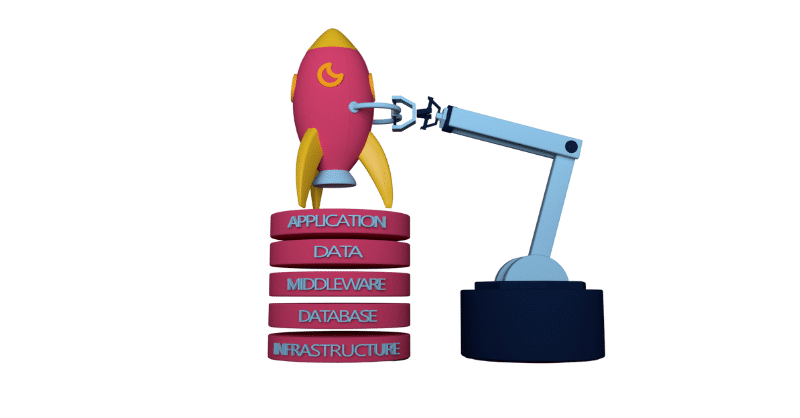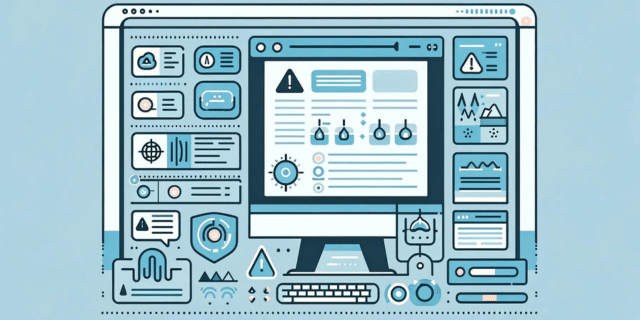In a world of distributed cloud-native applications, software/application support is pretty hard. We like to think we at Just After Midnight make it look easy, but there are some sweaty brows behind the scenes, even here.
Today, we take a look at 5 application support best practices, so you can get down with uptime, sort the wheat from the chaff and find the application support services provider you’ve always dreamed of.
As industry trailblazers, these are questions we think you should put to any support provider worth their salt.
But first, a brief remedial.
Support services explained: what falls under this umbrella

‘Support’ covers a smorgasbord of technical support services from application maintenance to monitoring Kubernetes clusters, generally however, what people mean is one of the three below.
Software/application support
Application support means monitoring things at the application level (although with the confluence of app and infrastructure, sometimes things aren’t so binary). Generally, however, this means a team of experts clued up in SQL, Java .Net et al, ready to take a ticket and solve a problem in the event that something in the client’s app goes bump in the night.
Cloud support
Similar to software support, but at the cloud layer. Again this means monitoring resources for outages, poor performance and X, Y and Z, then remediating when an issue arises.
Application maintenance
Although not technically support, application maintenance is often spoken of in the same breath. Generally, it means assessing software performance and then fine-tuning code for a better end-user experience.
Full-stack support
Full-stack application/infra support services means all (or most) of the above. It’s a term that’s caught on in recent years as applications have become more complex, requiring a more comprehensive support strategy.
Now – here’s what you need to give a support provider the 3rd degree!
Do you build patching into the equation?
Although this strays a little into application maintenance, supporting an application can mean keeping on top of security as well as outages, as one of the key things you’re looking for in a 24/7 support provider is an all-in-one capability.
If a patching issue causes lost revenue, and your support provider says “not my problem” – you’re gonna have a bad time.
The best solution – which is eerily similar to our own – is to package this in a VMaaS offering. But this isn’t the only way.
Support providers need to have the capacity to proactively monitor bulletins and RSS feeds of your key providers so emergency patches can be applied to any part of your stack.
Can you cover the full stack, including cloud-native elements?
Full-stack support is important because ideally, you need an all-in-one partner. In Medieval times, a knight would rarely go out with only the front face of his armour equipped. Twas ever thus.
Generally, full-stack means a provider who can respond to issues with the underlying cloud infrastructure, the application level, and issues with 3rd-party integrations and APIs.
However, this need is complicated by cloud-native.
Services like Kubernetes, Lambda and containers present real observability problems, so it’s a good idea to ask any prospective provider how they go about supporting these technologies.
There’s also some grey area as to what’s cloud support and what’s DevOps, so if you need support of your CI/CD pipeline (or something in that ballpark) out of hours, ask.
Show me those SLAs
There are a few green flags to look for when it comes to application support SLAs:
- Ticket response time (the most obvious). This needs to match your requirements in terms of what’s a disaster and an averted disaster for your business and your bottom line
- Being literate in your application. This means an SLA that reflects what’s likely to go wrong, how it’s likely to be fixed, and how fast that can happen. A good SLA will come out of a deep understanding of your technology stack
- Priorities that make sense to you. Matching an understanding of your stack to an understanding of your business will result in P1, P2 and PP3 issues that match what you really need
- A history of these SLAs being met!
Essentially, you want to avoid cookie-cutter SLA that might technically honour your agreement – but in reality, leave you high and dry.
How do we stay in touch?
Good communication is essential in any business relationship, but it’s especially important when it comes to application support.
When it’s the 11th hour, and the proverbial is hitting the fan, fast, clear communication can be the difference between a close call and a storm of that proverbial material.
Ask about Slack Channels, WhatsApp and other forms of communication on top of the ticketing system. Also, ask who you’ll be talking to and when you’ll be talking to them (their time).
When can you support us and how do you manage 24/7 cover?
Some teams will only need support out-of-hours. Some will need full 24/7 coverage, and some will need support in specific windows, such as after deployments.
You should ask how your specific needs will be priced. As you’ll want to pay only for the support you need.
On top, if you’re in the market for 24/7, 365 application support, ask how it’s delivered.
At Just After Midnight, our 24/7 application support model rests partly on our global footprint; having offices in four timezones means we always have support teams looking at tickets in the course of their normal working day, no matter what time it is.
Without naming names, it’s common for some support providers to use the dreaded ‘phone-by-the-bed’ model, which means pinging an engineer at 4 am.
And though it almost goes without saying, just picture yourself, dealing with a mission-critical app, spitting sparks and haemorrhaging cash, and all before you’ve had your Weetabix.
Our support services
You could, of course, track down another provider and ask these same questions. Or you could save yourself some time.
Our global team is powered by bespoke support solution Mission Control, which is able to draw every thread of a modern application (app, infra and integrations), providing a bird’s-eye view to a team of handpicked applications and cloud aficionados.
That’s true tech-enabled 24/7, full-stack, cloud-native support with an average response time of just 4 minutes.
We’ve carried out projects and set in place robust support strategies for some of the world’s leading brands and organisations, including Volvo, Heineken and the Australian Government.
So if you want to talk about getting your application covered, or anything else, just get in touch.





